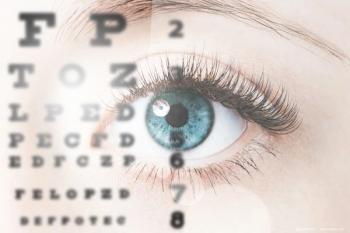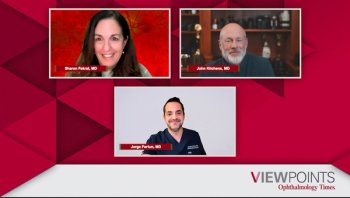
LASIK and beyond: Navigating the changing landscape of refractive surgery
Ophthalmologists discuss topography-guided techniques, long-term corneal health, and emerging technologies set to transform refractive surgery.
Refractive surgery continues to transform, with innovations in LASIK and other vision-correction procedures improving precision and patient outcomes. The Eye Care Network connected with specialists in refractive and corneal surgery to discuss current topics in the field. The conversation explores how topography-guided LASIK is shaping visual results, the ongoing challenges in predicting postoperative refractive outcomes, strategies for counseling patients on long-term corneal health, and emerging technologies that may enhance—or even redefine—current LASIK and PRK techniques.
Joining in the discussion are the following:
- Ella Faktorovich, MD, director of Refractive and Corneal Surgery at Pacific Vision Institute in San Francisco, California.
- Ellen Koo, MD, associate professor of clinical ophthalmology, and director, Bascom Palmer Palm Beach Gardens and cornea and external diseases fellowship program with the Bascom Palmer Eye Institute University of Miami Health System, Miami, Florida.
To gain insights, these ophthalmologists weigh in on the latest techniques, outcomes, and patient considerations in refractive surgery.
How have advances in topography-guided LASIK impacted patient outcomes?
Faktorovich: I consider topography-guided Contoura LASIK to be one of the most significant advances in refractive surgery. The ability to isolate and treat corneal imperfections has proven to be essential in optimizing refractive outcomes, especially in patients with asymmetric corneas, uneven corneas, and corneas with higher levels of higher-order aberrations such as coma or trefoil, for example. Screening with a Vario aberrometer to measure and map higher-order corneal aberrations is an essential part of our refractive surgery screening process. If significant aberrations are detected, topography-guided LASIK is recommended.
In patients with considerable corneal aberrations, the refractive outcomes have been more accurate than with other methods. For example, if a patient has coma aberration, it may be refracted as cylinder at the phoropter. If we treat this cylinder as a symmetric cylinder, the coma will remain and may present as under-corrected astigmatism postoperatively or create symptoms of glare postoperatively.
Koo: Topography-guided LASIK can provide meaningfully improved quality of vision by regularizing the cornea and reducing aberrations. This technology allows the surgeon to perform a personalized laser procedure for the patient. That is because topography-guided treatment aims to regularize any corneal irregularities based on the topographic data from the corneal surface.
What challenges remain in predicting postoperative refractive outcomes?
Faktorovich: Our results have been outstanding, with nearly 100% of patients achieving 20/15 and 25% of patients achieving 20/10 uncorrected vision postoperatively. The critical component of the process is the actual manifest refraction. It is factored into the Phorcides software used for planning topography-guided treatments. Accurate manifest refraction is, therefore, essential to successful outcomes with topography-guided treatments.
We spend a significant amount of time performing and scrutinizing the manifest refraction. In our clinic, optometrists perform the refraction. Vertex distance at the phoropter is standardized, and the protocol is written out and adhered to. The results are compared with autorefraction, which is also performed in a standardized way. Glasses and contact lens prescriptions are analyzed to make sure everything makes sense.
Best-corrected acuity is carefully determined. In many patients, preoperative best corrected acuity is 20/15 or even 20/10. If best corrected acuity of 20/15 is not obtained preoperatively, we will carefully scrutinize the tear film, do treatments to optimize, and re-refract. Trial frames or loose lenses may complement the manifest refraction. The corneal scans performed on the Vario device also have to be very accurate, with minimal variability between the scans.
If we see significant variability, we treat the tear film and have the patient return for repeat scans. Outstanding scans + outstanding refraction = outstanding results. It is time consuming to create the detailed protocols, to train people, and then to monitor outcomes through outcomes analysis. Unless one is passionate about this sort of extreme precision, it can be challenging to allocate time to this.
Koo: Following topo-guided LASIK, one of the main hurdles relates to the remodeling of the epithelium, which can partially offset the intended refractive correction. Another challenge is the frequent discrepancy between manifest refraction and the topographically-measured astigmatism of the anterior corneal surface. This difference usually arises from the influence of the posterior cornea and the crystalline lens.
Deciding which measurement to prioritize—or how to blend the two—really is dependent of careful surgical planning. There are ongoing efforts to improve treatment planning software and nomograms, which would help address these challenges.
How do you counsel patients on long-term corneal health after refractive surgery?
Faktorovich: Patients typically do great long-term. We encourage them to get an annual eye exam. If preoperative screening was good, their corneal health should remain good.
Koo: Initially, careful, commonsense postoperative care is a must: no eye-rubbing and usage of preservative-lubricants. Maintenance of the ocular surface (which include ongoing dry eye and MGD care) can help to preserve quality of vision. Additionally, for PRK patients, UV protection is a crucial long-term precaution after PRK. Consistent use of sunglasses that block 100% of UVA and UVB rays when outdoors is highly recommended for at least the first year, to prevent the development of corneal haze.
Are there emerging technologies that may replace or enhance current LASIK/PRK techniques?
Faktorovich: Wavelight Plus is the newest type of customized LASIK and PRK that was recently FDA-approved.1 It uses ray tracing technology to map the entire eye. By using over 100,000 data points, [the technology] works to create a 3D model, or “digital eye twin,” of each patient’s eyes with a combination of ocular wavefront, biometry, and corneal tomography measurements. The 3D model then guides a highly personalized procedure with the goal to improve visual acuity and correct more complex vision problems. This type of customization adds to topography-guided and wavefront-optimized custom treatment options. Each patient needs to be assessed individually to determine what type of customization is best for them.
Koo: I don’t think LASIK/PRK techniques will be replaced anytime soon. However, we will probably see more uptake of the small incision lenticule extraction (SMILE) procedure as the technique becomes increasingly sophisticated. We will also likely see the leverage of artificial intelligence (AI) in the role in surgical planning. AI-driven diagnostic tools can analyze a vast amount of data from corneal topography and other measurements to help surgeons identify the ideal candidates for surgery and create highly customized treatment plans that can lead to more predictable and superior outcomes.
Ella Faktorovich, MD
E: [email protected]
Faktorovich is director of Refractive and Corneal Surgery at Pacific Vision Institute in San Francisco, California. She did not indicate any relevant disclosures.
Ellen Koo, MD
E: [email protected]
Koo is associate professor of clinical ophthalmology, and director, Bascom Palmer Palm Beach Gardens and cornea and external diseases fellowship program with the Bascom Palmer Eye Institute University of Miami Health System, Miami, Florida. She did not indicate any relevant disclosures.
REFERENCE
Alcon announces first fully personalized LASIK treatment with wavelight plus in the US and Canada. News release. Alcon. September 9, 2025. Accessed October 31, 2025.
https://www.alcon.com/media-release/alcon-announces-first-fully-personalized-lasik-treatment-wavelight-plus-us-and-canada/
Newsletter
Don’t miss out—get Ophthalmology Times updates on the latest clinical advancements and expert interviews, straight to your inbox.














































.png)


